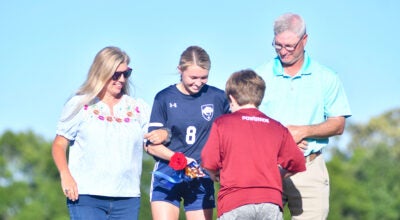‘Riata’ bahiagrass
Published 7:06 am Tuesday, January 6, 2009
The University of Florida extension researchers have developed and recently released a new bahiagrass forage variety called “Riata.”
The new grass was developed to withstand cold temperatures better than other bahiagrass varieties and produce forage longer, resulting in greater savings for cattle producers and dairymen.
The bahiagrass was produced for fall and early spring forage production for the southeastern United States. It has improved forage growth under short days and during the cool season. This new bahiagrass is a product of the University of Florida, the USDA-ARS Coastal Plain Experiment Station and the USDA-ARS Subtropical Agricultural Research Station (STARS)-Brooksville, Fla.
The new bahiagrass called “Riata” or lariat in Spanish, was developed by University of Florida extension forage specialist Ann Blount.
Blount says the new bahiagrass should be successful throughout the southern coastal plains. She said besides its use as a forage grass, it can be used in crop rotations and as a utility turf.
Blount says it should perform well in South Georgia because most of the work in the development of the grass took place six miles from the Georgia border. It is similar to “Tift Quick” developed by Rodger Gates with the University of Georgia. The advantage of “Tift Quick” is the high number of soft seeds that allows for quick germination.
The “Riata” bahiagrass doesn’t have as many soft seed so germination is a little slower. The only downside to “Riata” is if you don’t cut it for hay in a timely fashion and it gets rank you could have disease problems.
Riata is less sensitive to lower levels of sunlight, the leaf tissue has improved cold tolerance, and increased forage production can be expected during fall-winter period compared to the standard bahiagrass varieties Argentine and Pensacola. Variety trials at various locations show Riata is similar in total season yield to Tifton 9, with an improvement in seedling vigor and leaf tissue cold tolerance that promotes late fall-season growth and early spring-season growth.
The new bahiagrass seasonal forage yields have been greater than 25 percent compared with Argentine and Pensacola, and 5 to 10 percent compared with Tifton 9 in north Florida.
“Riata” is well adapted throughout the southern Coastal Plains and Peninsular Florida. It will be sold by variety name and only as a class of certified seed. It will be marketed by Ragan-Massey Seed and should be commercially available in 2009.





